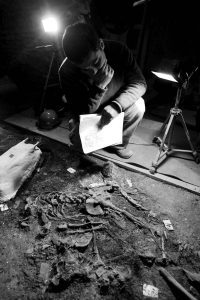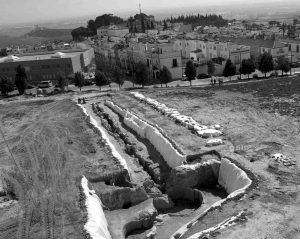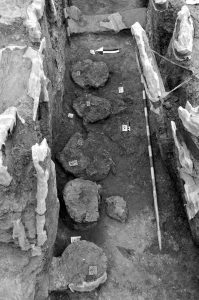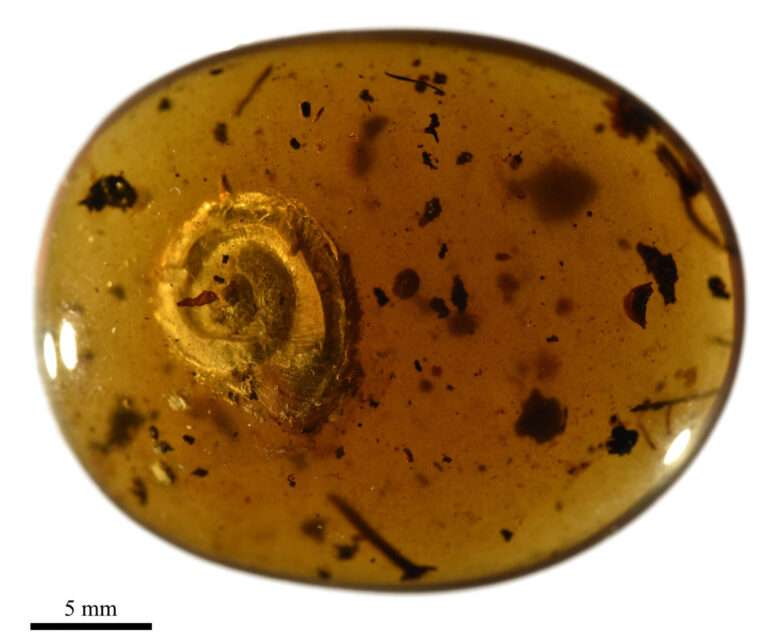Scientists have discovered that the dancing priestesses of a 4,800-year-old temple built in the centre of a hill where they worshipped a “mother goddess” died with dangerously high levels of mercury used in worship rituals in their bodies.
They said the mother goddess religion to which the woman belonged was widespread throughout Europe at the time, three centuries before the birth of Christ, and interestingly found that all of the 20 priestesses including one who had six toes are likely to have suffered deaths from mercury poisoning caused by the use of the red mineral cinnabar – rich in highly toxic mercury sulphide.

The discoveries were made at the site of a large megalith chamber uncovered in the province of Seville in the autonomous community of Andalusia in Spain.
The mineral had been used to paint the walls, and was also dusted over the bodies of the dead priestesses who were laid in the temple so they could continue to honour the goddess. They said all of the women showed “high levels” of mercury which would have caused serious motor and cognitive dysfunctions.
The scientists say as well as breathing in the dust and worshipping in the temple that had slate walls covered in mud and painted with the red mineral, they also believe the women would have painted their bodies with the pigment that would have been absorbed through the skin.
The team believe all the women would have enjoyed high ranks in their society, as exhibited by valuables including ivory and ostrich eggs from Africa as well as jewellery and handmade artefacts like a spectacular rock crystal dagger that were all found in the tomb.

All of the women were laid to rest wearing impressive sequin dresses and there were also numerous beads from jewellery that had been placed with them in the tomb at the Montelirio temple in Seville.
The scientists say paintings on the walls of the chamber also in red were meant to worship the sun.
So far 20 bodies have been discovered, with 15 confirmed to have been young women who died on average around the age of 31, and the other five of as yet undetermined gender but also believed to be women.
They noted that one of the bodies had been placed in a position of worship in front of the clay mother goddess effigy, and the tomb had been designed so that the early morning sunlight would shine on the goddess at the start of the day.

An investigation led by Professor Leonardo Garcia Sanjuan from the Department of Prehistory and Archaeology from the University of Seville found that even by the standards of the time, for the woman to all have died in their early 30s was unusual.
An examination of the bones found no evidence of a violent death further supporting the theory that they died from mercury poisoning, and the bones also revealed that the woman had probably all been dancers.
The wealth in the tomb would have meant all of them enjoyed privileged positions in their society in which they had probably been singled out for the role and interestingly, one of the women even had six toes, further underlining that she was regarded as special in having been selected to worship in the tomb.
Sanjuan told Central European News (CEN): “A geochemical study of the bones of the buried women in the large chamber at Montelirio reveals large amounts of mercury, which is completely abnormal. That can be only explained with strong and/or prolonged exposure to cinnabar for the women.
“Cinnabar is a strong red coloured pigment which contains mercury and was very valued in the Chalcolithic era in the context of mortuary practices, burial ceremonies and in general the field of religion.

“The most plausible hypothesis to explain the presence of mercury in the women’s bones is that they were in close contact with that substance for a long time (maybe they used it for body painting and absorbed it through their skin) or they absorbed it through inhalation, breathing the cinnabar in dust.”
The megalith construction is believed to have been built between the years 3,000 and 2,800 B.C. and was covered in a thin layer of the mineral cinnabar.
Sanjuan explained that as the tribes of the Chalcolithic era in the area were illiterate they have left no clue as to how they called themselves. He said that the chamber was created by tribes undergoing “social, economic and cultural transformations”.
The professor added: “They had an agrarian system and most were stable cattle breeders (including possibly the exploitation of pigs of pasture), which allowed them to have more surplus, which was used in the mobilisation of resources in certain social practices, among which the Megalith and construction of pits played an important part.”

The wealthier tribes at the time would have kept pigs that would have been raised in oak woodlands feasting on acorns and roots, explaining why acorns were included among the jewellery items found in the tomb.
He added: “They were communities that were growing in social complexity, with more sophisticated political institutions, including leaders who were trying to consolidate their influence and power and an elite who used lavish artefacts made with exotic materials such as ivory, flint, rock crystal, and amber to affirm their position and manipulate the social environment.”
The site where they were buried, named Tholos de Montelirio was discovered in 1998 and excavated between 2007 and 2010.
The sequin dresses the women were buried in are believed to have weighed between eight and ten kilograms (17 – 22 lbs).
To find out more about the author, editor or agency that supplied this story – please click below.
Story By: Angjela Trajkovska, Sub-Editor: Joseph Golder, Agency: Central European News




